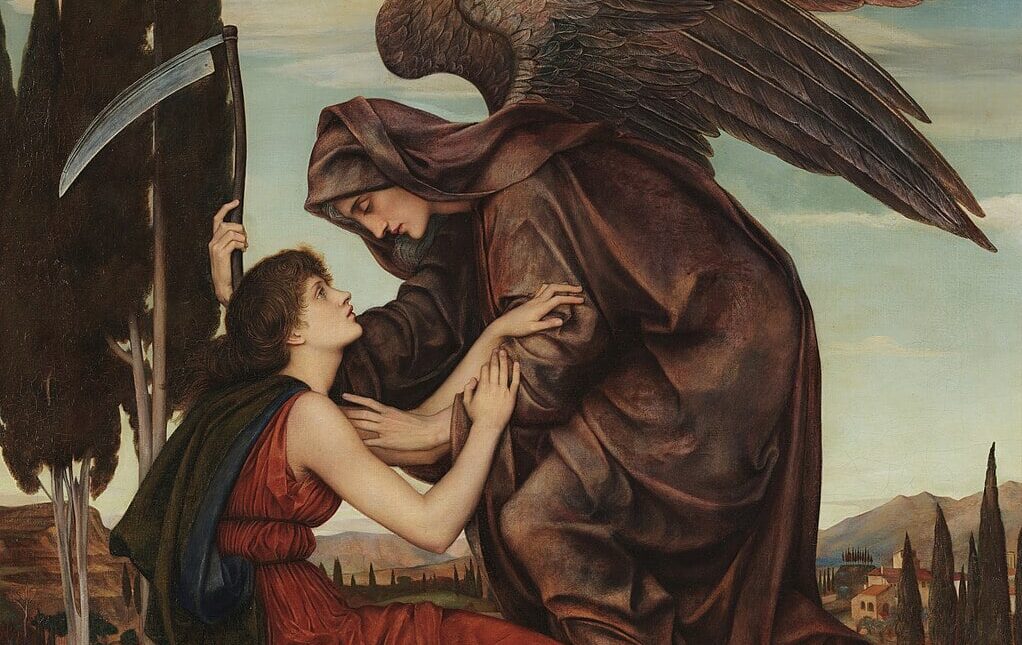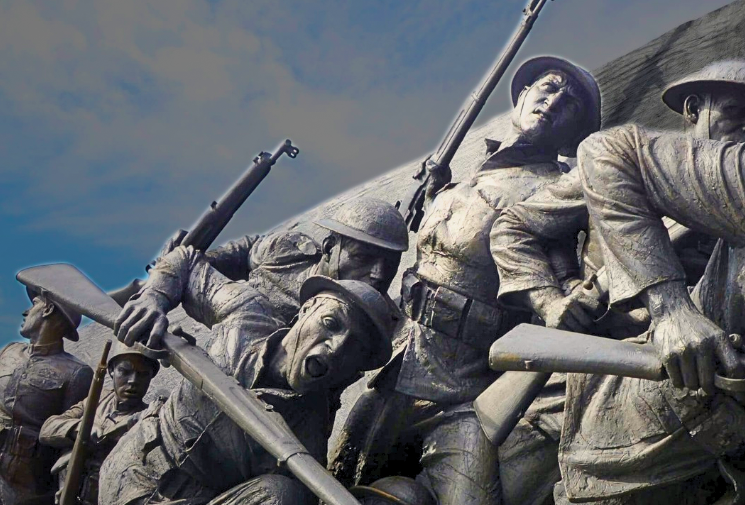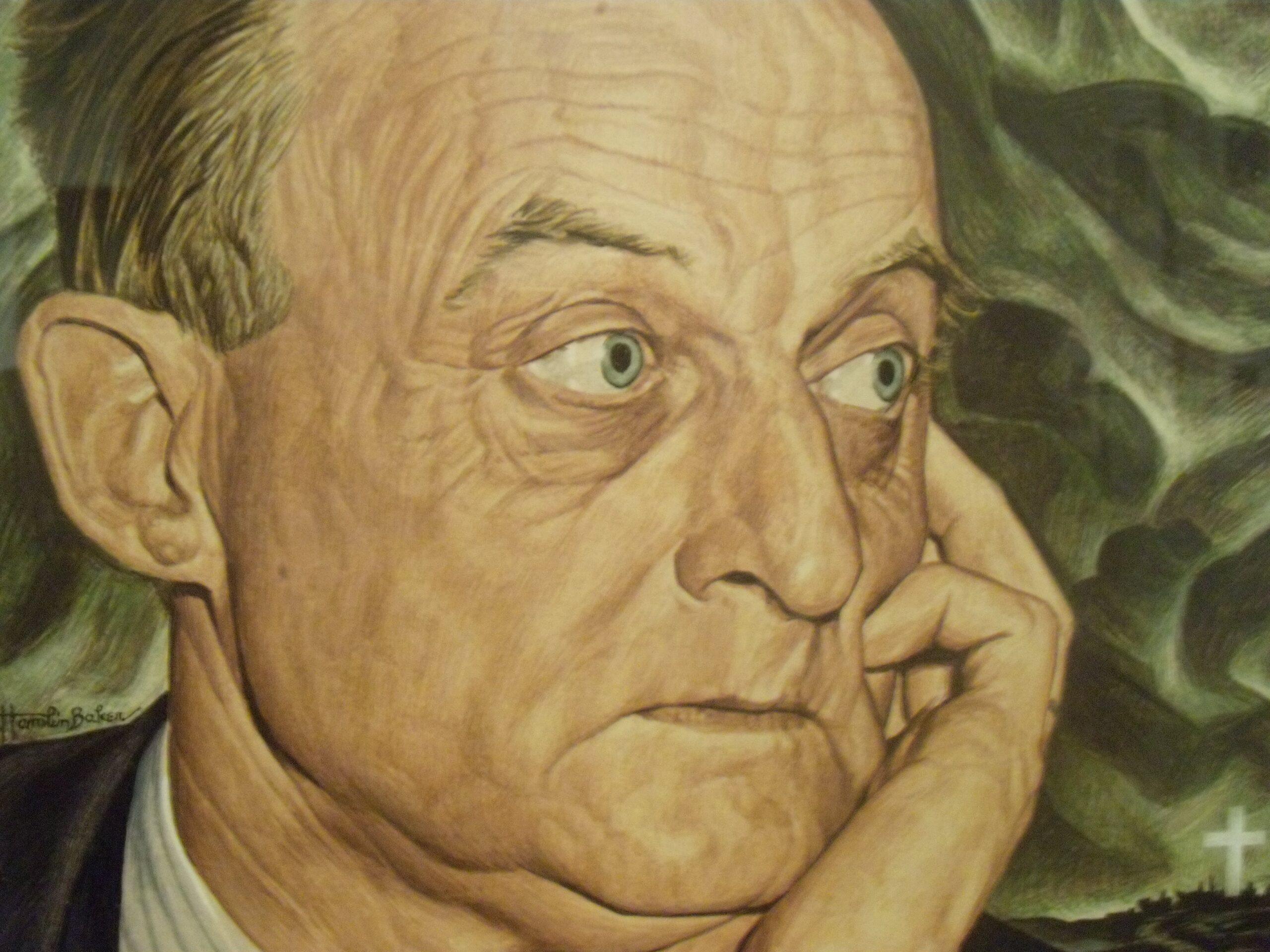This review appears in the Summer 2019 issue of Modern Age. To subscribe now, go here.
Making Music American:
1917 and the Transformation of Culture
By E. Douglas Bomberger
(Oxford University Press, 2018)
In Arthur Schnitzler’s masterful novel about fin-de-siècle Vienna, The Road to the Open, America figures prominently as a kind of promised land. The protagonist is a young nobleman and fledgling composer named Georg von Wergenthin. As he broods about his uncertain prospects, Georg recalls the pragmatic advice given to him by several friends: rather than trying to make his name back home, “it would be better to go on tour through America as a composer and conductor” and, on top of that, “an American heiress is not to be scoffed at.” Others agree. The kindly Doctor Stauber, who is treating Georg’s pregnant lower-middle-class girlfriend, Anna Rosner, suggests that moving to America “wouldn’t be the worst thing. I have a cousin who is a violinist in Boston, a certain Schwarz, who earns at least six times as much there as he got at the opera here.” Georg may chafe inwardly at the indignity of being compared to someone named Schwarz, but he ends up dreaming at length about traveling on a steamer across the Atlantic to Boston, where he is supposed to conduct an orchestra impatiently awaiting his arrival.
This vision of the Central European musician as conquering hero was not quite as fanciful as it might seem. In 1908, the year Schnitzler’s novel was first published, Gustav Mahler had abandoned Vienna, where he was subjected to anti-Semitic outbursts during performances, for New York, where he conducted Wagner’s Tristan und Isolde on New Year’s Day at the Metropolitan Opera to rapturous reviews. (Mahler appears in Schnitzler’s novel and also served as a model for Thomas Mann’s Gustav von Aschenbach in Death in Venice.) In Boston, Dr. Karl Muck, a stern exponent of the German repertoire who had studied classical philology at Leipzig University, presided over the Boston Symphony Orchestra, which was widely viewed as America’s foremost ensemble. And in New York, Walter Damrosch, the son of Leopold and Helene, the former a well-regarded conductor and the latter a celebrated opera singer, led the New York Symphony Orchestra, championing both Teutonic masterpieces and new American works, some of which he himself composed. Other stars dotting the American musical landscape included the violinist Fritz Kreisler, who briefly served in the Austrian Army in 1915, and the Austrian contralto Ernestine Schumann-Heink, who had sons fighting on the American and German sides in World War I.
In Making Music American, E. Douglas Bomberger minutely examines this formative era in American musical culture. He shows that German musicians may have been riding high, but they confronted an unprecedented challenge with the advent of World War I. Bomberger is a musicologist at Elizabethtown College and the author of several books, including a biography of the pioneering American composer Edward MacDowell. He draws on extensive archival research and a wide range of contemporary newspaper accounts to argue that 1917 was a hinge point in American culture, when the German classical tradition came under attack from jingoists, and jazz emerged as a new and popular musical genre.
The atmosphere in America on the eve of war became increasingly fraught with tension for the guardians of Old World traditions. Theodore Roosevelt had decried dual loyalties in a speech on Columbus Day 1915 in New York. He declared: “There is no room in this country for hyphenated Americans. . . . A hyphenated American is not an American at all.” In particular, Roosevelt was convinced that German-language newspapers, schools, and social organizations amounted to hotbeds of treasonous activity. In California, the state legislature banned the singing of German songs in public schools, and the Metropolitan Opera in New York purged German works and singers alike. “By the end of the war,” notes Bomberger, “sauerkraut was called Liberty Cabbage, hamburgers were sold as Liberty Stead, the Hackfeld Dry Goods store in Honolulu was renamed Liberty House, and streets named after German cities or persons were permanently renamed in many American cities.”
The Boston Symphony Orchestra’s Muck soon came under fire. The symphony was founded in 1881 by the Boston banker Henry Lee Higginson, who had poached Muck from the Royal Opera in Berlin, where he was a favorite of Kaiser Wilhelm’s. In 1917 an apprehensive Higginson wrote to Charles Eliot, the retired president of Harvard, to ask his advice about signing Muck to a new contract. Eliot assured him that he would never doubt Higginson’s patriotism, yet cautioned, “I think our Government will be slow to take any really troublesome action against German residents; but the moment killing, drowning, and wounding begin, our people will probably make the Germans with us uncomfortable and apprehensive. Then you may have to stop maintaining the Orchestra.”
Trouble came soon enough. In November, Muck gave a concert in Providence, Rhode Island, in Infantry Hall and was accused of refusing to play “The Star-Spangled Banner.” It turned out that the symphony’s manager had received and ignored a telegram from the chairman of the Rhode Island Liberty Loan committee and eight women leaders of musical clubs requesting that the orchestra play the anthem. An uproar ensued. the star-spangled banner slighted by boston symphony orchestra ran a front-page headline in the Los Angeles Times.
Muck’s lofty response did not help matters: “Why will people be so silly? Art is a thing by itself and not related to any particular nation or group. Therefore it would be a gross mistake, a violation of the artistic taste and principles, for such an organization as ours to play patriotic airs.” Boston mayor James Curley promptly announced that Muck would not be allowed to perform again in Symphony Hall unless he played the anthem, while TR complained, “No man has any business to be engaged in anything that is not subordinate to patriotism.”
Muck capitulated in November and played the anthem in Boston at the outset of a series of concerts. But in 1918 he was dispatched to an internment camp as an enemy alien. In 1919 he was deported to Germany, where he led the Hamburg Philharmonic and asserted that the bumbling American intelligence services had confused his notations for a performance of a Bach oratorio, the St. Matthew Passion, with secret codes.
Fritz Kreisler, too, was targeted. The Women’s Club of Sewickley Valley, north of Pittsburgh, canceled a planned concert, while the Daughters of the American Revolution, the Daughters of 1812, and the Daughters of the Confederacy all demanded that his concerts in Pittsburgh in November 1917 be terminated. According to Bomberger, “The violinist who had always been a favorite of Pittsburgh audiences was now branded an Austrian army officer on furlough while he recovered from an injury, a financial contributor to weapons destined to kill American soldiers, and a spy who was sending American military plans and secrets to his masters in Europe.” Kreisler ended up retiring from the stage rather than enduring further calumnies.
One European artist who successfully navigated the daunting political currents swirling in America was Walter Damrosch. The sinking in February 1917 of the American merchant ship SS Housatonic, which was carrying wheat for England, coincided with a Young People’s Concert that Damrosch was conducting in Carnegie Hall. The prudent Damrosch had the New York Symphony Society play “The Star-Spangled Banner” and then turned to the three thousand children in the audience, stating, “My dear young friends: One of the noblest functions of music is to arouse patriotism.”
Then there was the buxom Schumann-Heink. Schumann-Heink, who had three marriages and numerous children, was one of the country’s most beloved singers, famed for her iron constitution and powerful voice that could effortlessly traverse the scale from low D to high C. She debuted at Bayreuth in 1898 and became an American citizen in 1908, naming one of her sons “George Washington Schumann-Heink.” She later proposed that an “American Bayreuth” be held every summer in the Spreckels Organ Pavilion in Balboa Park, San Diego, but American entry into the war put the kibosh on her plans. Instead, Schumann-Heink held numerous benefit concerts and was soon known as “Mother Schumann” by the troops. The newly established Military Intelligence Section and the Justice Department opened files on Schumann-Heink but were unable to ferret out any nefarious activity on her part.
Bomberger ably covers the treacherous terrain that Damrosch and others had to traverse during World War I, but he doesn’t really show that the classical traditions they sought to uphold were fundamentally altered. Instead, a new wave of émigré conductors, ranging from Arturo Toscanini to Fritz Reiner to George Szell, took the reins of American orchestras, fashioning them into first-rate ensembles, while artists such as Jascha Heifetz became legends. Indeed, after World War II, a new musical golden age began with the introduction of stereo recordings from companies such as RCA, Mercury, and Columbia that allowed for a reasonable simulacrum of an orchestra to be reproduced at home.
The real change that occurred was the rise of jazz, or “jass,” as it was often called early on. Bomberger expertly delineates the arrival of jazz in New York, highlighting the New Orleans natives Freddie Keppard and Nick LaRocca. Bomberger emphasizes that LaRocca’s Original Dixieland Jazz Band made history with the first commercially released jazz record in February 1917 on the Victor Label. It contained the hit song “Livery Stable Blues.” “For the first time,” Bomberger writes, “jazz musicians began listening to and imitating a record in addition to basing their styles on musical scores or live performances. The five-piece instrumentation of the band had an immediate impact on other bands.” Jazz was the first musical genre that was shaped as much by recordings as by live performances, its evolving styles, from the Hot 5 and 7 sessions of Louis Armstrong to the contemporary pianist Bill Charlap, captured permanently, first on analog, then digital, recordings. According to Bomberger, “The unprecedented success of ‘Livery Stable Blues’ illustrated the sales potential of popular music, which proved more successful than classical music records for the first time.”
Rather more questionable is Bomberger’s contention that the “anti-authoritarian message of jazz in 1917 was perhaps its greatest contribution to American musical aesthetics.” This seems excessive. Louis Armstrong, Duke Ellington, and Count Basie were widely viewed as the ancien regime by the 1950s. Bebop may have marked a new revolutionary force in jazz, but by the 1960s it had become its own establishment, sidelined by the rise of Free Jazz and, above all, rock ‘n’ roll. Today Wynton Marsalis and the Lincoln Center Jazz Band are sometimes derided as neoconservatives for trying to uphold and revivify swing traditions. A forthcoming movie—Marsalis has written and arranged the music for it—about Buddy Bolden, the cornet king of New Orleans, is likely to engender fresh interest in the origins and direction of jazz.
Still, in exhuming the pasts of leading musical artists, Bomberger sheds valuable light on the cultural turmoil and conflicts of a bygone era. The orchestral warhorses of the classical and romantic age may no longer have the ability to provoke controversy, but that is also testament to their fading appeal and importance. Perhaps it’s not wholly misplaced to feel a pang of nostalgia for a time when it was otherwise. ♦
Jacob Heilbrunn is editor of the National Interest.
Founded in 1957 by the great Russell Kirk, Modern Age is the forum for stimulating debate and discussion of the most important ideas of concern to conservatives of all stripes. It plays a vital role in these contentious, confusing times by applying timeless principles to the specific conditions and crises of our age—to what Kirk, in the inaugural issue, called “the great moral and social and political and economic and literary questions of the hour.”
Subscribe to Modern Age »












